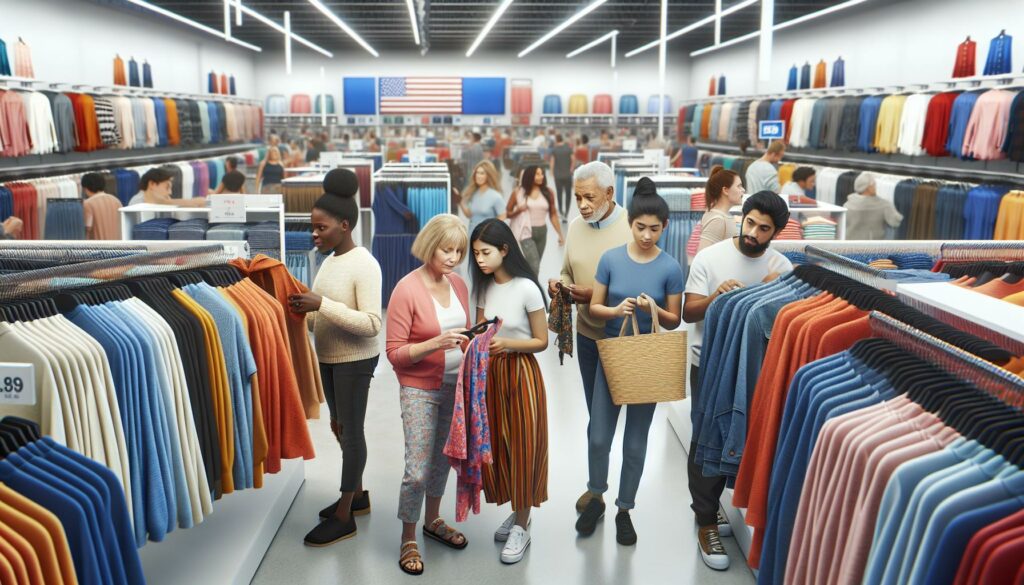When I think about affordable shopping, Ross Dress for Less often comes to mind. With its bargain prices and a wide variety of clothing options, it’s easy to see why so many people flock to this retailer. But I can’t help but wonder: is Ross truly a fast fashion brand, or does it offer something different?
Fast fashion typically refers to retailers that quickly churn out trendy clothing at low prices, often at the expense of ethical practices and sustainability. As I dive into the world of Ross, I’ll explore its business model, the quality of its products, and how it fits into the broader conversation about fast fashion. Understanding this can help us make more informed choices about where we shop and what we wear.
- Is Ross Fast Fashion: Unlike typical fast fashion brands, Ross operates as an off-price retailer, focusing on selling excess inventory from established brands rather than rapidly producing new styles.
- Unique Business Model: Ross’s strategy revolves around opportunistic buying, allowing it to offer quality products at reduced prices without engaging in unsustainable production cycles.
- Sustainability Aspects: While Ross sources leftover inventory, promoting recycling and reuse, it still faces scrutiny regarding its contribution to a throwaway culture commonly associated with fast fashion.
- Consumer Appeal and Experience: The thrill of discovering discounted brand-name items in a constantly changing inventory drives brand loyalty and repeat visits from budget-conscious shoppers.
- Ethical Considerations: Unlike many fast fashion retailers, Ross’s practices provide a slightly more sustainable alternative, appealing to consumers concerned about environmental impact and ethical labor practices.
Is Ross Fast Fashion
Is Ross Fast Fashion refers to the business model that prioritizes speed and affordability in clothing production. Retailers utilize a rapid turn-around process to move designs from the runway to store shelves in a matter of weeks. This approach capitalizes on current trends, allowing consumers access to the latest styles at low prices.
Fast fashion brands typically introduce new collections frequently, often every few weeks. This constant influx of new items encourages consumers to buy more, reinforcing a cycle of consumption that leads to increased waste. Reports indicate that the fast fashion industry contributes significantly to environmental issues, with estimates suggesting it generates more than 92 million tons of waste per year worldwide.
Additionally, fast fashion is often associated with ethical concerns. Many brands produce garments in countries with lax labor regulations, leading to exploitation and unsafe working conditions. Customers increasingly seek transparency about production practices and sustainability in response to these ethical dilemmas.
Fast fashion entails quick production cycles and low-cost garments that often overlook ethical practices and environmental impact. Understanding this landscape aids consumers like me in navigating their shopping choices more responsibly.
Understanding Ross Stores
Is Ross Fast Fashion operates as a prominent off-price retailer, known for offering a mix of discounted brand-name apparel and home goods. This section explores the company’s history and its diverse product offerings.
Company History
Is Ross Fast Fashion, founded in 1982 in California, began as a small chain of clothing stores. Its strategy centered on buying excess inventory from other retailers, allowing it to provide quality products at reduced prices. Over the decades, the brand expanded significantly, now operating over 1,500 locations across the United States. Ross focuses on providing customers with a treasure hunt shopping experience, featuring new merchandise weekly. This consistent influx of products keeps the shopping experience fresh and engaging.
Product Offerings
Ross Stores carry a wide range of products, including women’s, men’s, and children’s clothing, footwear, home decor items, and accessories. The brand emphasizes variety and affordability, often featuring products from well-known labels at discounted prices. Seasonal selections and clearance items also contribute to the constantly changing inventory. Ross’s strategy involves maintaining a no-frills shopping environment, which allows for cost savings that benefit consumers. Shoppers frequently find designer brands alongside private-label offerings, catering to diverse consumer preferences.
Analyzing the Fast Fashion Label
Fast fashion represents a retail segment that thrives on quick production and affordability in clothing. Understanding this concept clarifies whether Ross fits within this category.
Defining Fast Fashion
Fast fashion refers to brands that rapidly create clothing lines inspired by the latest trends. These retailers prioritize speed, producing items at low costs often through mass production. The approach enables them to introduce new styles frequently, appealing to consumers’ desires for trendy, affordable options. However, this model often leads to concerns about sustainability and ethical labor practices as companies seek to maximize profits.
- Rapid Production Cycles
Retailers employ agile manufacturing processes, allowing for quick turnaround times from design to store shelves. - Low-cost Materials
Fast fashion brands typically use inexpensive fabrics and materials, compromising quality and longevity. - Frequent Inventory Changes
New products arrive at stores regularly, fostering an environment where consumers feel pressure to buy now to avoid missing out. - Global Supply Chain
Many fast fashion brands rely on a global network of suppliers, often manufacturing in regions with lower labor costs and fewer regulations. - Targeted Marketing Strategies
Brands utilize targeted advertising, appealing to consumers’ emotions and desires for the latest trends, promoting a cycle of consumption.
Understanding these elements reveals the core of the fast fashion model, and it’s crucial to evaluate how Ross fits into this landscape.
Is Ross Fast Fashion?
Understanding whether Ross fits into the fast fashion category requires a closer look at its pricing strategies and supply chain practices.
Pricing Strategies
Ross employs a discount pricing strategy, positioning itself as an off-price retailer. By buying excess inventory and overstocks from various brands, Ross manages to offer quality products at significantly reduced prices. This model differs from traditional fast fashion brands that prioritize low-cost production methods, often compromising on quality. While Ross’s pricing may seem fast fashion-like, its focus on selling established labels at lower prices sets it apart, appealing to budget-conscious shoppers looking for brand-name items without the fast fashion drawbacks.
Supply Chain Practices
Ross maintains a unique supply chain approach, primarily relying on opportunistic buying. The retailer acquires excess inventory, allowing it to avoid the typical fast fashion model characterized by rapid production cycles. Instead of churning out new designs quickly, Ross emphasizes quality merchandise procured from existing stock. While fast fashion brands often utilize overseas manufacturing with cheaper labor, Ross’s inventory is sourced secondarily, typically consisting of unsold products from other retailers. This practice supports sustainability by encouraging the purchase of leftover items rather than contributing to the continuous cycle of new clothing production seen in traditional fast fashion.
Consumer Perception of Ross
Consumers often view Ross as a budget-friendly option for clothing and home goods, raising questions about its sustainability and brand loyalty in the fast fashion dialogue.
Sustainability Concerns
Sustainability concerns resonate strongly with consumers today. Many shoppers associate fast fashion with environmental damage and unethical practices. While Ross doesn’t fit the typical fast fashion model, its inventory practices invite scrutiny. Ross sources excess inventory, promoting the idea of reusing and recycling products, which supports a more sustainable shopping approach. However, critics argue that selling discounted clothing still contributes to a throwaway culture. Understanding this paradox helps consumers assess how their purchasing decisions align with their values regarding sustainability.
Brand Loyalty and Shopping Trends
Brand loyalty plays a crucial role in consumers’ shopping patterns Is Ross Fast Fashion. The store’s unique positioning as an off-price retailer cultivates a dedicated customer base attracted to discounted brand-name items. Shoppers appreciate the thrill of the treasure hunt experience, which encourages repeat visits. Trends indicate a noticeable shift toward value-driven shopping, with consumers prioritizing quality and affordability. As brand loyalty grows, Ross could strengthen its market position by emphasizing its commitment to sustainability, appealing to conscientious shoppers seeking to balance their budget with ethical considerations.
Navigating the fast fashion landscape can be tricky but understanding Ross’s unique position is key. While it offers discounted brand-name items, its model diverges from traditional fast fashion practices. By focusing on excess inventory rather than rapid production cycles, Ross promotes a more sustainable approach to shopping.
As consumers increasingly prioritize ethical considerations and sustainability, Is Ross Fast Fashion has the opportunity to enhance its appeal by emphasizing its commitment to responsible practices. This shift could not only strengthen brand loyalty but also align with the growing demand for transparency in the retail industry. Ultimately, making informed choices at Ross can lead to a more conscious shopping experience.

